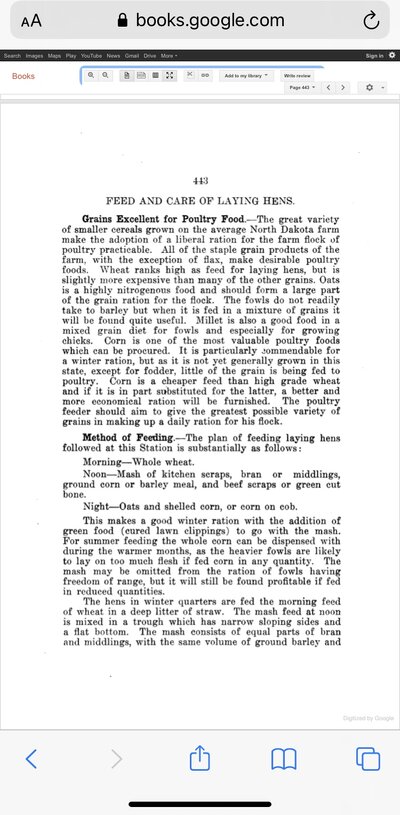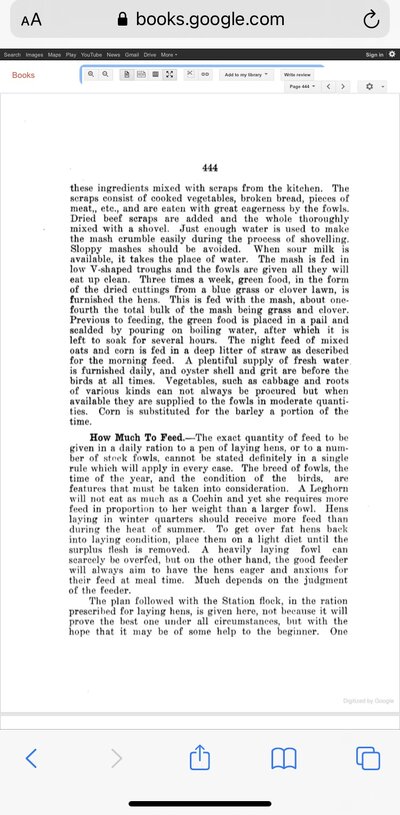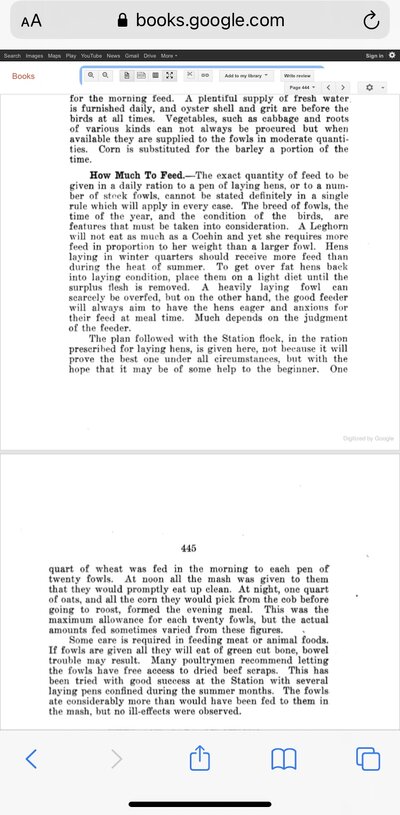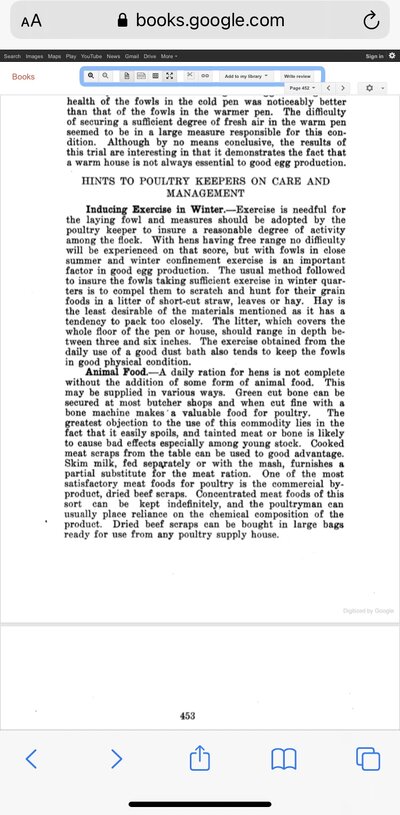- Thread starter
- #41
North Dakota, 1907
In addition to sometimes free ranging, chickens were fed:
Grains, greens (even in winter), and meat (even when partially replaced by milk)
This paper only sort of gives recipes. It looks more variable than what I would call a recipe.
Source
North Dakota Agricultural College
Bulletin 78
In addition to sometimes free ranging, chickens were fed:
Grains, greens (even in winter), and meat (even when partially replaced by milk)
This paper only sort of gives recipes. It looks more variable than what I would call a recipe.
Source
North Dakota Agricultural College
Bulletin 78
Attachments
Last edited:








